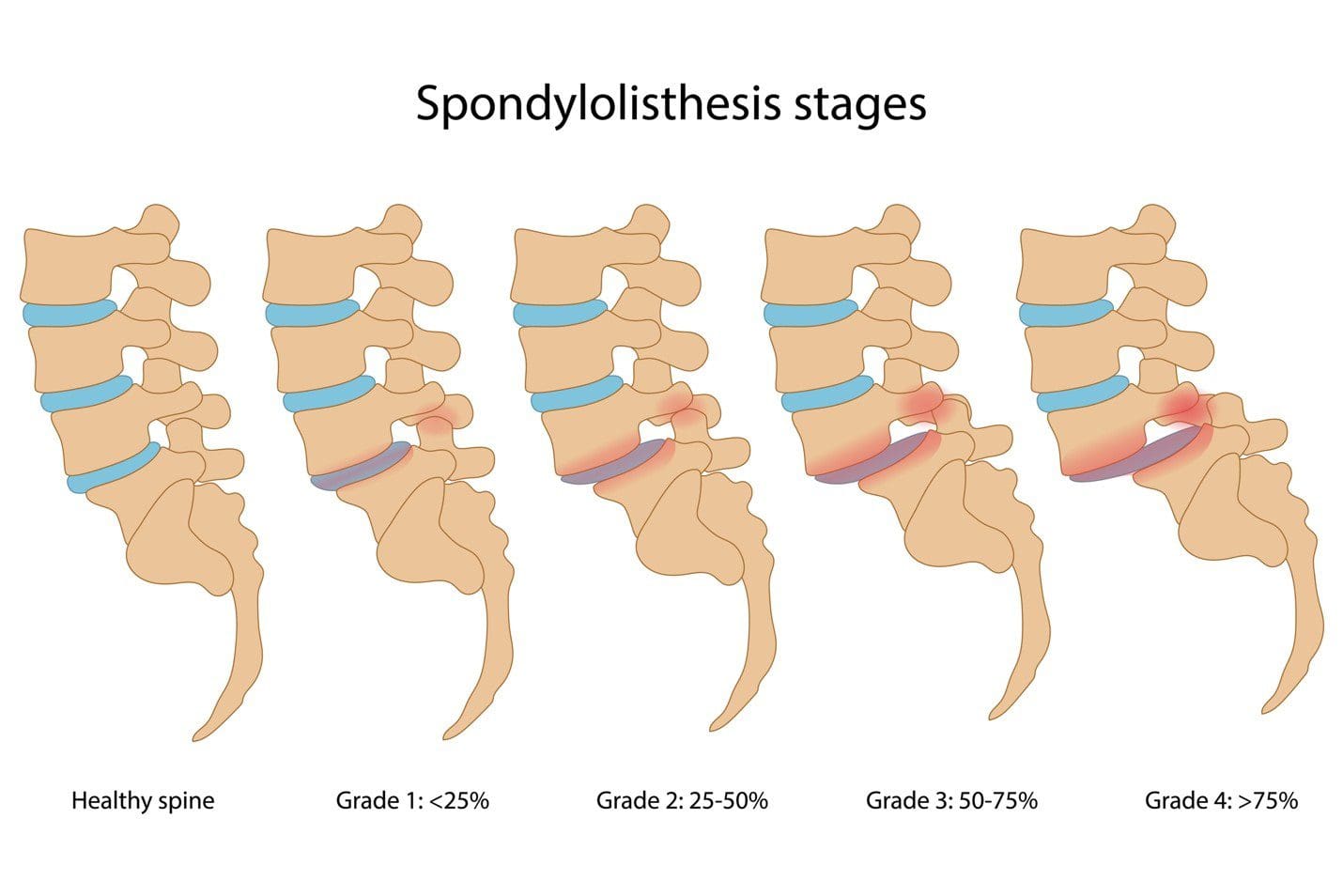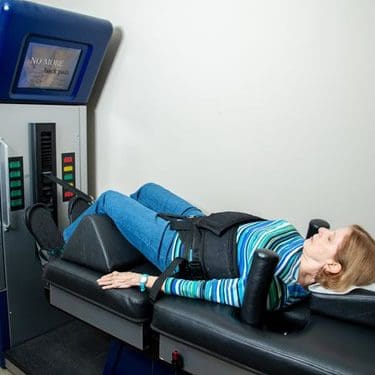Introduction
The back’s primary purpose is to bend, twist, and turn without pain in the body because the spine keeps the body upright and healthy. The spine is an S-shaped structure surrounded by ligaments, muscles, tissues from the musculoskeletal system, and the spinal canal, discs, and cords that help the body stay functional. When chronic issues start to affect the entire body, they can also affect the back, causing it to be in pain. When this happens, many back issues begin to rise, causing the individual to be in pain due to low back pain. Sometimes even conditions and natural aging can cause problems on the back and spine that treatments are available to help alleviate the symptoms and reduce pain. Today’s article will be looking at spondylolisthesis, its symptoms, and how decompression therapy can help many individuals suffering from spondylolisthesis. By referring patients to qualified and skilled providers specializing in spinal decompression therapy. To that end, and when appropriate, we advise our patients to refer to our associated medical providers based on their examination. We find that education is the key to asking valuable questions to our providers. Dr. Alex Jimenez DC provides this information as an educational service only. Disclaimer
Can my insurance cover it? Yes, it may. If you are uncertain, here is the link to all the insurance providers we cover. If you have any questions, please call Dr. Jimenez at 915-850-0900.
What Is Spondylolisthesis?
Have you ever felt unstable as you are moving throughout the day? How about radiating pain that travels down your legs? Or having low back pain dampening your day? You might be experiencing spondylolisthesis in your spine. Research studies have stated that spondylolisthesis is a condition that affects the lower lumbar spine by causing the spinal disc to slip out and press on the spinal nerve root. When this happens, it can cause low back pain and various issues on the spine depending on what condition the category spondylolisthesis falls under.
Spondylolisthesis can be classified into five different categories that can affect the spine. Other research studies have found that the five categories that spondylolisthesis is classified under are:
- Degenerative: Where the spinal joints are arthritic and cause stress and instability to the ligamentum flavum.
- Isthmic: There are fractures on the spinal joints that cause the result of anterior slippage through repetitive stress fractures on the spine.
- Traumatic: Where the spine experiences high energy trauma.
- Dysplastic: When there is congenital dysplasia on the spine causing the anterior and superior joints to be rounded on the vertebrae
- Pathologic: Where conditions like bone tumors, osteopetrosis, or osteoporosis affect the spine.
These different categories are the causes of spondylolisthesis and result from low back pain for many individuals, while also being unilateral and bilateral depending on the category and how severe the symptoms are.
The Symptoms
With the different categories of spondylolisthesis, the symptoms can range from mild to severe pain due to the spinal discs being slipped out of place. Research studies have found that since spondylolisthesis is known to be the cause of low back pain, it can also be caused the nerve roots to be pinched due to the vertebrae disc slipping out and narrowing the space for the nerve roots. Other symptoms include:
- Muscle spasms on the legs
- Stiffness
- Pain from bending
- Tingling sensations in the feet
- Can’t stand for too long
Non-Surgical Decompression Explained-Video
Do you feel radiating pain down your leg? How about waking up and your back feeling stiff? Or even having a dull gradual pain in your lower back after walking around? You might be experiencing spondylolisthesis, and decompression therapy can help alleviate these symptoms. The video above shows how non-surgical decompression therapy can help alleviate low back pain caused by spondylolisthesis. Decompression therapy utilizes traction to take the pressure off the nerve root by gently pulling the slipped disc back into the spine. This causes relief to many individuals dealing with low back pain and other back and spinal issues that have constantly hindered them. Incorporating decompression therapy can provide the reassurance that many people need for them to get back on their wellness journey. If you want to find out more about decompression therapy, this link will explain its benefits and how it can alleviate symptoms caused by spondylolisthesis.
How Decompression Therapy Can Alleviate Spondylolisthesis
Many treatments can help alleviate low back pain like chiropractic therapy, massages, hot or cold compress, or even physical therapy. One of these treatments that can help with low back pain and spondylolisthesis is decompression therapy. Research studies have found that since spondylolisthesis causes the lower lumbar spinal disc to slip out and pinch the nerve root, decompression therapy can take it off and gently pull it back into the spine. This will cause any pain symptoms to be alleviated and reduce the instability that is causing many people pain from walking for long periods. Other research studies have shown that decompression helps restore the disc height and reduce spondylolisthesis symptoms.
Conclusion
Spondylolisthesis is one of the causes of low back pain, and it has become the most common symptom for many individuals to be suffering. Spondylolisthesis has five categories with different symptoms that can cause spinal issues to the spine. Overall, spondylolisthesis is where the lumbar spinal disc is slipped out and pinches the nerve roots spread throughout the spine. These symptoms can be alleviated through decompression therapy and cause the relief to the lower back. Decompression therapy utilizes traction to take the pressure off the nerve root and increase the disc height on the spine, allowing the discs to be gently pulled back into their original position and providing instant relief for many individuals.
References
Cheung, Jason Pui Yin, et al. “Decompression without Fusion for Low-Grade Degenerative Spondylolisthesis.” Asian Spine Journal, Korean Society of Spine Surgery, Feb. 2016, https://www.ncbi.nlm.nih.gov/pmc/articles/PMC4764545/.
Gagnet, Paul, et al. “Spondylolysis and Spondylolisthesis: A Review of the Literature.” Journal of Orthopaedics, Elsevier, 17 Mar. 2018, https://www.ncbi.nlm.nih.gov/pmc/articles/PMC5990218/.
Medical Professionals, Cleveland Clinic. “Spondylolisthesis: What Is It, Causes, Symptoms & Treatment.” Cleveland Clinic, 7 Aug. 2020, https://my.clevelandclinic.org/health/diseases/10302-spondylolisthesis.
Studnicka, Katarzyna, and George Ampat. “Lumbosacral Spondylolisthesis – StatPearls – NCBI Bookshelf.” StatPearls [Internet]. Treasure Island (FL), StatPearls Publishing, 29 Nov. 2021, https://www.ncbi.nlm.nih.gov/books/NBK560679/.
Tenny, Steven, and Christopher C Gillis. “Spondolisthesis.” StatPearls [Internet]. Treasure Island (FL), StatPearls Publishing, 25 July 2021, https://www.ncbi.nlm.nih.gov/books/NBK430767/.
Disclaimer
Post Disclaimer *
Professional Scope of Practice *
The information herein on "Alleviating Spondylolisthesis With Decompression Therapy" is not intended to replace a one-on-one relationship with a qualified health care professional or licensed physician and is not medical advice. We encourage you to make healthcare decisions based on your research and partnership with a qualified healthcare professional.
Blog Information & Scope Discussions
Welcome to El Paso's Premier Wellness and Injury Care Clinic & wellness blog, where Dr. Alex Jimenez, DC, FNP-C, a board-certified Family Practice Nurse Practitioner (FNP-C) and Chiropractor (DC), presents insights on how our team is dedicated to holistic healing and personalized care. Our practice aligns with evidence-based treatment protocols inspired by integrative medicine principles, similar to those found on dralexjimenez.com, focusing on restoring health naturally for patients of all ages.
Our areas of chiropractic practice include Wellness & Nutrition, Chronic Pain, Personal Injury, Auto Accident Care, Work Injuries, Back Injury, Low Back Pain, Neck Pain, Migraine Headaches, Sports Injuries, Severe Sciatica, Scoliosis, Complex Herniated Discs, Fibromyalgia, Chronic Pain, Complex Injuries, Stress Management, Functional Medicine Treatments, and in-scope care protocols.
Our information scope is limited to chiropractic, musculoskeletal, physical medicine, wellness, contributing etiological viscerosomatic disturbances within clinical presentations, associated somato-visceral reflex clinical dynamics, subluxation complexes, sensitive health issues, and functional medicine articles, topics, and discussions.
We provide and present clinical collaboration with specialists from various disciplines. Each specialist is governed by their professional scope of practice and their jurisdiction of licensure. We use functional health & wellness protocols to treat and support care for the injuries or disorders of the musculoskeletal system.
Our videos, posts, topics, subjects, and insights cover clinical matters and issues that relate to and directly or indirectly support our clinical scope of practice.*
Our office has made a reasonable effort to provide supportive citations and has identified relevant research studies that support our posts. We provide copies of supporting research studies available to regulatory boards and the public upon request.
We understand that we cover matters that require an additional explanation of how they may assist in a particular care plan or treatment protocol; therefore, to discuss the subject matter above further, please feel free to ask Dr. Alex Jimenez, DC, APRN, FNP-BC, or contact us at 915-850-0900.
We are here to help you and your family.
Blessings
Dr. Alex Jimenez DC, MSACP, APRN, FNP-BC*, CCST, IFMCP, CFMP, ATN
email: coach@elpasofunctionalmedicine.com
Licensed as a Doctor of Chiropractic (DC) in Texas & New Mexico*
Texas DC License # TX5807
New Mexico DC License # NM-DC2182
Licensed as a Registered Nurse (RN*) in Texas & Multistate
Texas RN License # 1191402
ANCC FNP-BC: Board Certified Nurse Practitioner*
Compact Status: Multi-State License: Authorized to Practice in 40 States*
Graduate with Honors: ICHS: MSN-FNP (Family Nurse Practitioner Program)
Degree Granted. Master's in Family Practice MSN Diploma (Cum Laude)
Dr. Alex Jimenez, DC, APRN, FNP-BC*, CFMP, IFMCP, ATN, CCST
My Digital Business Card





